“Too slow, too safe. Faster.” This is a phrase you will likely hear at an open company class with Cross Move Lab, directed by Guanglei Hui. From the moment I came across his class footage when looking for new classes at Peridance Capezio Dance Center, I knew it would be both athletically and stylistically exigent. If you’re an NYC dance artist looking for a great class, look no further.
Contemporary dance is often associated with slow movement, but the opposite is true in Guanglei’s refreshingly fast and convoluted class. What I was most surprised by at the end of class (other than pouring sweat with a giant bruise I am now happily wearing on my knee) was-how much I improved in such a short amount of time, but not just in the regular things like picking up a new style and getting stronger, but something much more grounding.
There was a theme present in Guanglei’s class, one that challenges the mind to almost separate from movement that is strenuous or complicated. Once you are able to relax into what is difficult, your muscle memory kicks in, and you aren’t even thinking about what you’re doing. It felt like my mind was following my body, and not the other way around. I was in a relaxed state of intense concentration. Once you embrace this approach, you are able to execute his movement.
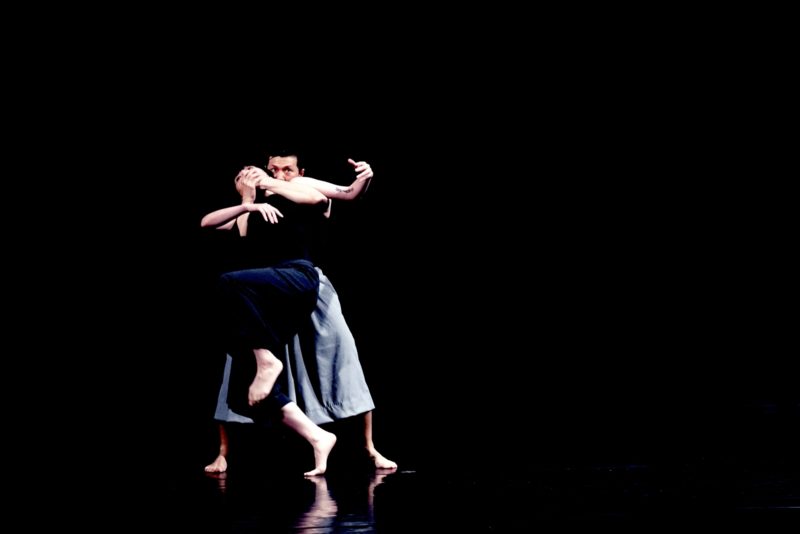
The class began with a quick but stylized warm-up grounded in release technique and stabilizing the lower body while keeping the torso relaxed. We held second position plié while holding other low level lunges, activating the leg muscles for what was yet to come. Pretty quickly into the one hour and a half class, he began teaching an intricate choreography combination.
It took the majority of the dancers a little ways into the movement combination for the initiations of each movement to click, with much clarifying from Guanglei. The class was full of advanced professional dancers, all challenged by something in the combination whether it was the detailed initiations, switching the of hips, or fast whirling floor work. Since his choreographic transitions were seamless, it felt natural to perform the tricks in the combination.
Beneath all of the quick arm movements and directional changes, the momentum came mainly from the torso. Once you grasp this, your kinesthetic intelligence does the thinking. A tip for taking this class is to pay close attention to what the hips, shoulders, and torso are doing, as these are common points of initiation. Pay attention to what body part is leading the movement, sometimes the leg follows the hip, or vice versa, and Guanglei does a great job of making these things clear and reviewing as needed throughout the class. In moments of doubt, just keep the body in motion, as there are no real pauses and transitions are aqueous.
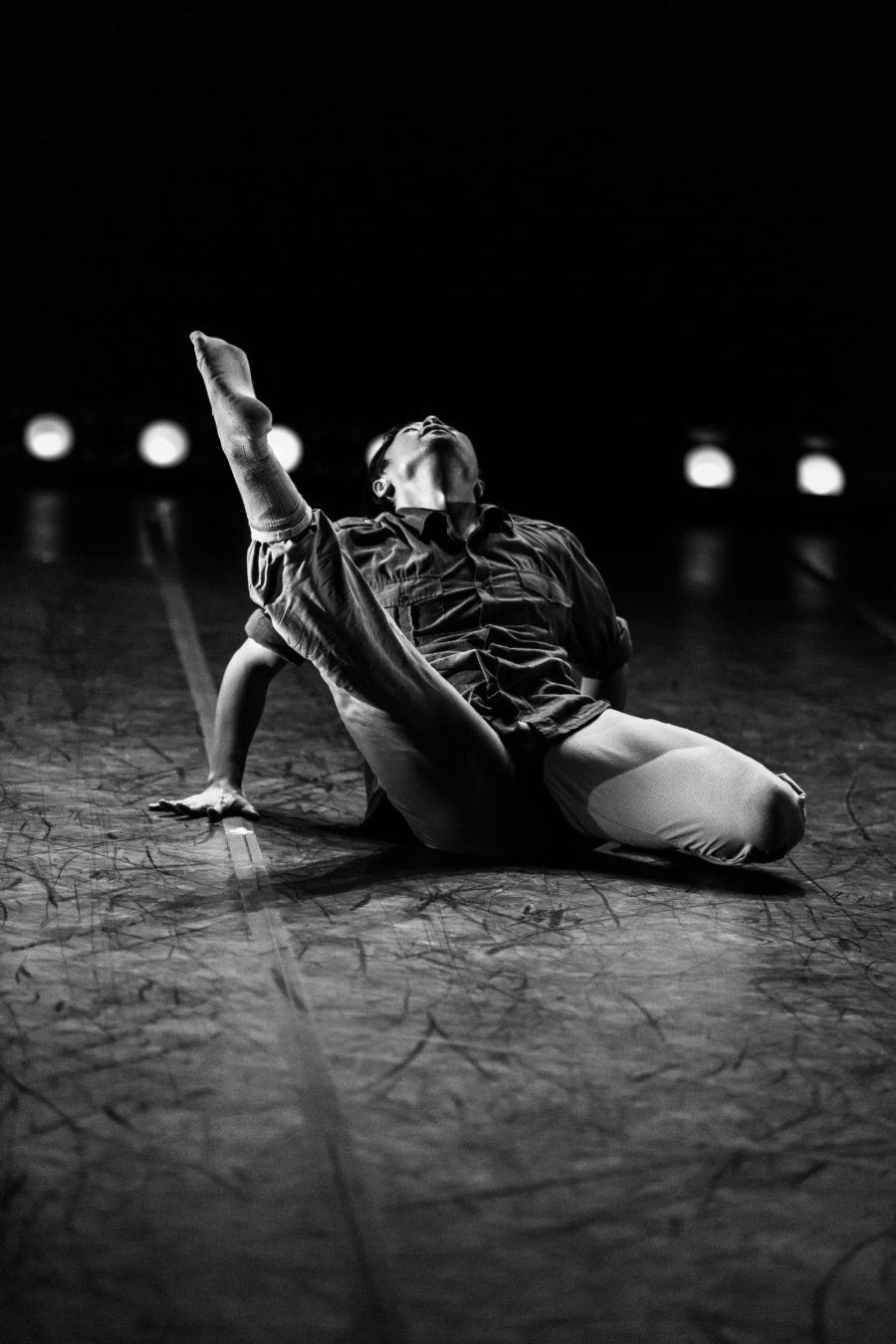
I’ll compare it to earth elements; If something like Horton modern technique is solid and strong, Guanglei’s style of release technique is smooth like water with a less obvious undercurrent element of control. There are less sharp movements, so everything connects like a cursive sentence. The jumps that did show up in the movement happened from the floor and often traveled horizontally instead of vertically, and stayed low to the ground.
Guanglei’s choreography had an experimental relationship with the electronic music that was setting a tone playing in the background of class, as the timing of the movement was independent from the music. Midway through class I realized I had instantly become addicted to his style, philosophy, choreography, and instruction. He was able to inspire my mental approach, mind and body connection, and I felt use of all of my body parts in every movement. I was curious to learn more about Guanglei, who was able to share more information on his background and the work he is doing in NYC.
I had the opportunity to observe Guanglei’s rehearsal process and found that his philosophy of dance as it being an art of movement that is as constant as the blood running through our veins. Every movement can be translated into dance, and with that, Guanglei does not like his dancer’s to play it safe. His choreography consists of much risk which makes it all the more exciting for both the performers and audience.
Look out for Cross Move Lab on the NYC dance scene, and be sure to take Guanglei’s classes if you are tired of playing it safe!
As Guanglei and I have now been connected as fellow artists in this wonderful dance community, he has shared much about his story with me and now to The Wonderful World of Dance!
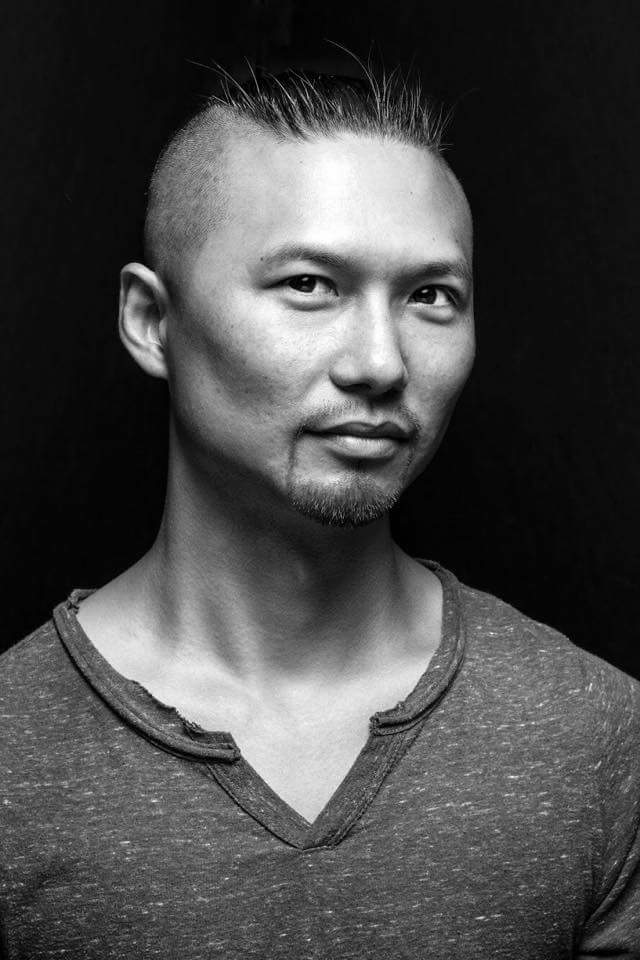
It seems like you’ve hit the city out of nowhere with such a high level of artistry. Where do you hail from?
I am from China, and before I established my own company Cross Move lab, I have been trying hard in the last twenty years to become an independent artist, choreographer and dancer. I studied at The Bishkek of arts named B. beishenalieva from 2001 to 2003, earned a degree in Choreography/Russian Classical Ballet Performance with Education. During my study, I competed in Bishkek International Dance Competition and won second place. In 2005, I joined Guangdong Modern Dance Company, the first ever modern dance company in China. In 2008, as part of GMDC member, I performed in an anniversary celebration of Pina Bausch Dance Company in Germany; in 2011, I worked as an invited choreographer in Yokohama Dance Collection; in 2012, I was invited by the International Choreographers Residency Program (ICR) participating in the American Dance Festival. In 2013, I joined White Wave Young Soon Kim Dance Company; in 2014, I began working with Shen Wei Dance Arts; in 2016, I was invited to Taipei Dance Round Table Project to work on a new original piece.
In 2018, I received Artist Commissioning Program Grants from Queens Council on the Arts and started teaching in Queens College. I have toured in more than twenty countries, participating international arts festivals, I am also a co-founder of Touch Contact Improvisation.
What brought you to the NYC dance scene?
New York City is a holy place for artists, with unlimited energy and charming mystery. As a modern and contemporary dancer, it is only natural for me to be attracted to it. I want to learn from it, meet wonderful people, and improve my art level.
What do you hope to accomplish here?
I had only one goal when I came here, and that was to get into Shen Wei Dance Company to become one of the cast. I wanted to learn from him, to change my perspective–Shen Wei treats every piece of dance as a piece of art, not just body motions. His educational influence is life changing. Currently I am devoted to my own work and I hope I can gain acknowledgement and support from the great people in this great city.
Who have you studied under and what choreographers have most inspired your work?
I need to give the list in three categories.
I worked and studied with renowned international artists including Sang Jijia( from William Forsythe Dance Company), Yin Mei ( YMDC Artistic Director), Margaret Jenkins ( MJDC Artistic Director), Shen Wei (Shen Wei Dance Arts Artistic Director), Hou Ying (HYDT Artistic Director), Jodi Melnick, Cheng-Chieh Yu(UCLA Dance Professor).
The most influential choreographers who shaped my daily life are Shen Wei and Hou Ying. Hou Ying used to work in Shen Wei Dance Company as rehearsal director, and she was the one encouraged me coming to explore New York City!
The third list, I need to give credit to the masters whom I have no chance to work with, but have been educated and inspired by their philosophy and work, they are Merce Cunningham, Trisha Brown, Pina Bausch, William Forsythe, Ohad Naharin, Crystal Pite, etc. They have big impact on my choreography.
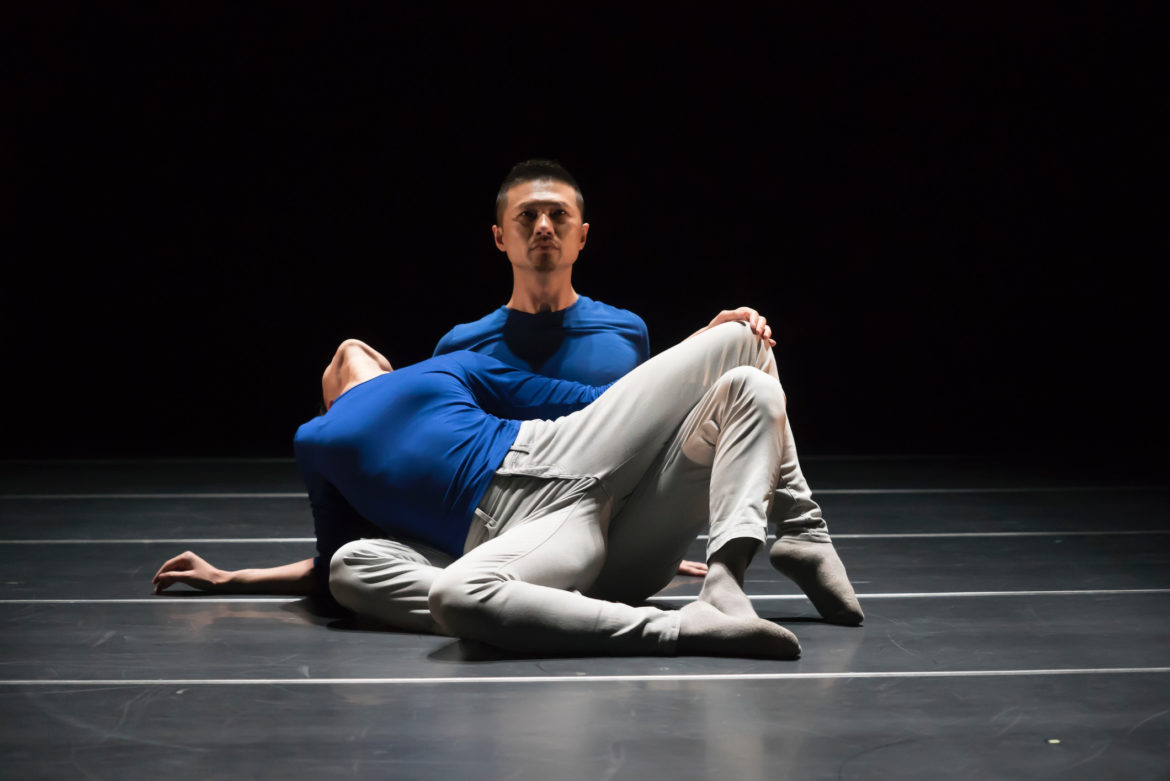
What technique(s) is your style grounded in?
Trisha Brown, William Forsythe, Steve Paxton (contact improvisation), Shen Wei dance arts, Russian classical ballet.
Do you consider yourself an innovator or are you carrying on the style of those you studied under?
I have always been an innovator. I study like a sponge. I want to be like cows, they eat grass and produce milk. I can be and like to be inspired by anyone, but I create my own dance.
Tell us about your company, Cross Move Lab?
Cross Move Lab was established in 2013, I am the founder, artistic director and major choreographer. We have six female dancers, plus myself, total seven members. So far we have produced ten pieces of work, under the same mission and philosophy. We want to innovate, not sacrifice; we want to explore natural physical motion, not the common movement; we deconstruct body and build new moving combination, not being restricted by body limitation. We are committed to develop body potentials.
Where may we catch your company in an upcoming performance?
On October 20, 2019, Cross Move Lab will perform a 45 minutes new piece in Queens Museum. It’s my honour to receive the Artist Commissioning Program Grants from Queens Council on the Arts.
Are you building a repertory? What is your work comprised of?
Yes, I have created ten pieces now. In the newest piece, I use new media and installation.
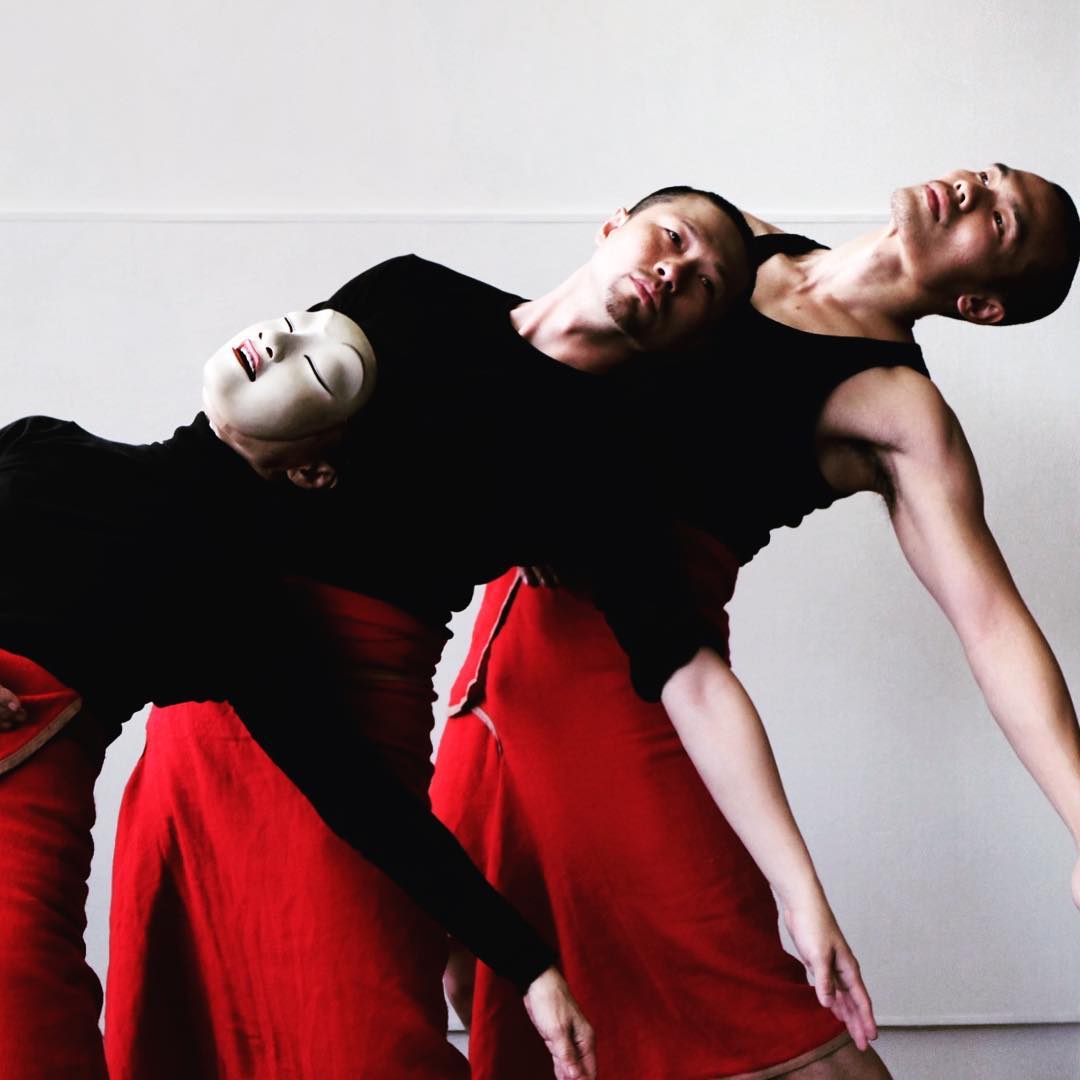
Tells us what an audience might feel from seeing your work.
Aesthetic, original, flowing line, poetic feeling, strong technique, inner strength. These are the keywords I picked from some audience’s feedback.
This is written by an audience: My appreciation for Guanglei’s work is aesthetic. For me dance is above all about movement and Guanglei has developed a highly original and beautiful movement language that is characterized by a flowing line and strong poetic feeling. Underpinning that is strong technique built from a solid classical foundation. Also making itself felt is Guanglei’s inner strength, let’s call it qi. The quality of his work is supported and expanded by tasteful costume choices as well as set design and lighting.
Tell us about the open company class program at Peridance.
I was invited to teach contemporary dance in September 2018. I taught two classes, Peridance certificate program and my own company’s open class. Peridance has plenty programs for students to choose from, including short term training for international students, as short as three months or six months, and as long as one year or two years.
What spurred the name “Cross Move Lab”?
When two lines cross, there is a dot, that is the original dot where my dance began, it indicates my artistic philosophy being based on an Original Dot, AKA I want my art to have purity and simplicity. “Move” can extend the dot to unlimited line. Lab stands for my attitude, the process is to have fun, to experiment innovation, to be bold, and to reach more possibilities.


